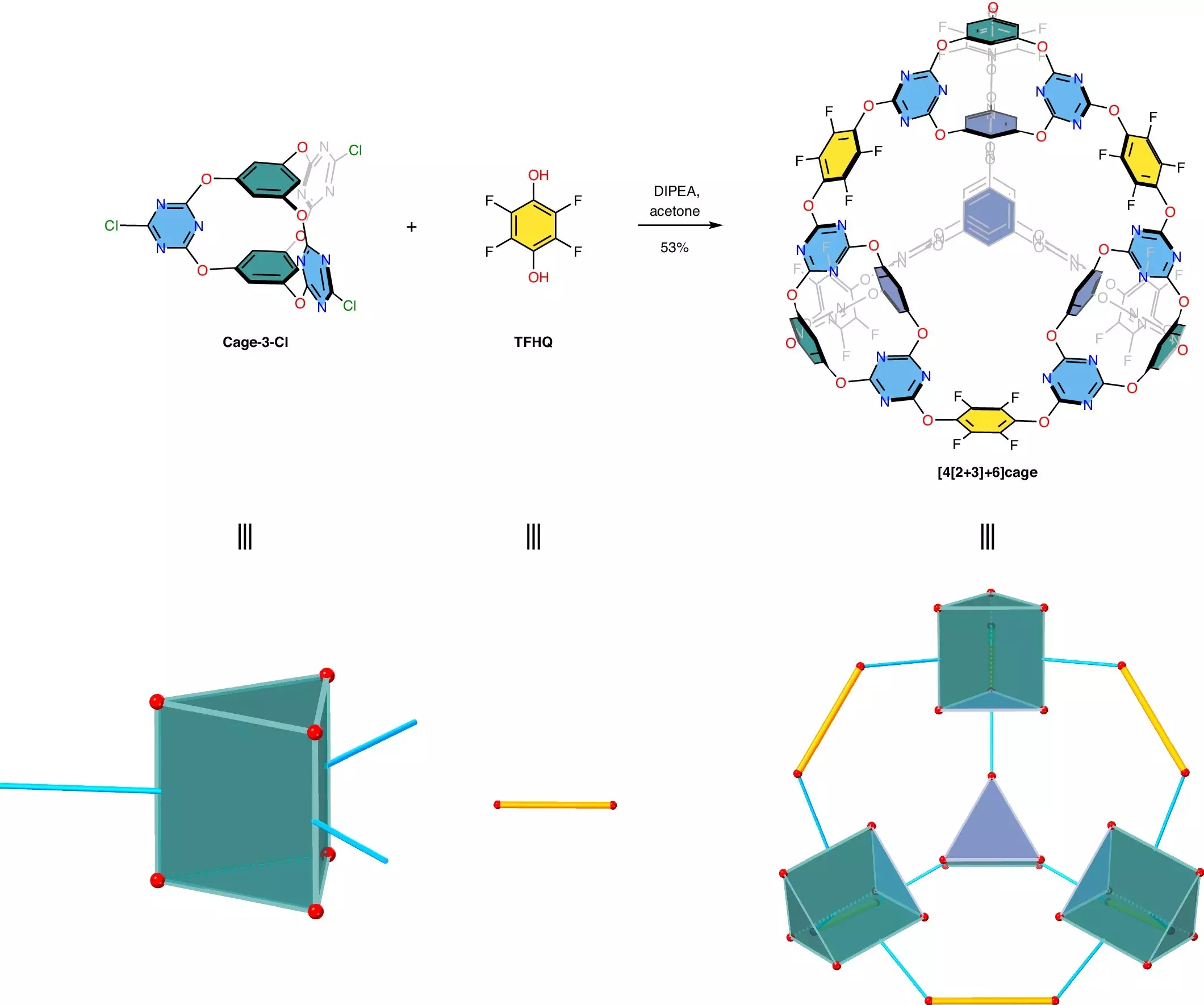In a groundbreaking collaboration spearheaded by Heriot-Watt University in Edinburgh, Scotland, a team of scientists has developed a novel porous material with the capability to store carbon dioxide and other greenhouse gases. This innovative research marks a significant advancement in the quest for sustainable solutions to mitigate the harmful effects of greenhouse gas emissions on our environment.
Utilizing state-of-the-art computer modeling techniques, the team, in partnership with prominent academic institutions such as the University of Liverpool, Imperial College London, the University of Southampton, and East China University of Science and Technology, successfully envisioned the molecular assembly process of the porous material. The resulting hollow, cage-like molecules exhibit exceptional storage capacities for greenhouse gases like carbon dioxide and sulfur hexafluoride, a potent greenhouse gas notorious for its extended atmospheric lifespan.
The ‘Cage of Cages’ Structure
The scientists ingeniously constructed a porous material characterized by a unique “cage of cages” structure. By interlocking individual cage molecules, the team has created a porous framework that promises unparalleled efficacy in capturing and storing greenhouse gases. Dr. Marc Little, an expert in porous materials and Assistant Professor at Heriot-Watt University, expressed his enthusiasm about this groundbreaking discovery, emphasizing the urgent need for innovative porous materials to address societal challenges related to greenhouse gas emissions.
The implications of this research extend far beyond greenhouse gas storage. The team’s computer modeling specialists from Imperial College London and the University of Southampton played a pivotal role in predicting the assembly of the cage molecules, paving the way for future advancements in materials design. Dr. Little highlighted the potential of leveraging complex molecular structures to combat toxic compounds, such as volatile organic compounds, and revolutionize fields like medical science. The team envisions a future where these porous materials could be instrumental in environmental conservation and industrial applications.
The development of this novel porous material represents a significant milestone in the ongoing fight against greenhouse gas emissions. The “cage of cages” structure offers a glimpse into the potential of molecular design in addressing pressing environmental challenges. As Dr. Little aptly stated, this discovery serves as a critical step towards unlocking a new era of sustainable materials with diverse applications in greenhouse gas capture, environmental remediation, and beyond. The collaborative efforts of these scientists herald a promising future where innovative solutions pave the way for a more sustainable planet.



Leave a Reply